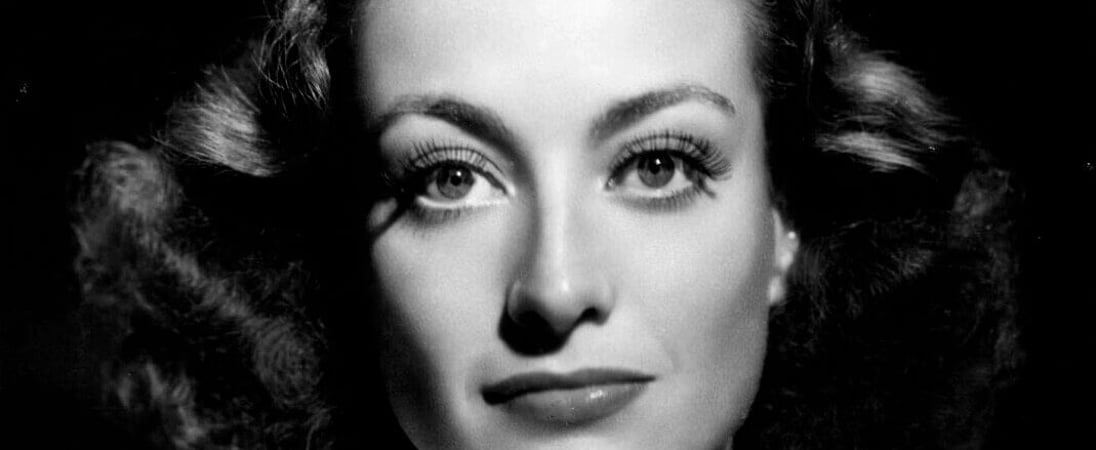
Joan Crawford's birthday
Joan Crawford, originally Lucille Fay LeSueur, was born on March 23, 1904, in San Antonio, Texas. She overcame early hardships, including a severe foot injury, to pursue her dreams.
Joan’s acting career began on Broadway, leading to a contract with MGM in 1925. She became a leading lady in films that appealed to audiences during the Depression.
Her role in “Mildred Pierce” (1945) won her an Academy Award. Joan also had a significant role at Pepsi-Cola Company after marrying Alfred Steele. Complex relationships with her children marked her personal life. Crawford passed away in 1977, leaving behind a lasting legacy.
Joan Crawford’s Early Years and Education
Joan Crawford, born Lucille Fay LeSueur, started her life in San Antonio, Texas, on March 23, 1904. She faced a rocky childhood after her father left the family when she was just ten months old.
Her mother, Anna Bell Johnson, remarried and moved the family to Lawton, Oklahoma, where Joan, then known as Billie, first discovered her love for performance.
This early love for the stage was nurtured despite the family’s financial struggles and her mother’s turbulent relationships. Joan’s stepfather’s involvement in the opera house in Lawton exposed her to the performing arts, a spark that would define her future.
Education for Joan was a mix of hardship and opportunity. After moving to Kansas City due to a scandal involving her stepfather, Joan attended St. Agnes Academy and later Rockingham Academy as a work student.
Her time at these institutions was challenging; she worked more than she studied, struggling to balance her duties with her academic and dance aspirations. Despite these difficulties, Joan’s determination to succeed in the entertainment industry never waned.
She briefly attended Stephens College in Columbia, Missouri, but left after a semester, her ambitions pointing her toward the bright lights of Broadway and beyond. Joan’s early life was a testament to her resilience, setting the stage for her eventual rise to stardom.
Joan Crawford’s Rise to Stardom
Joan Crawford’s journey from Broadway to Hollywood marked the beginning of her legendary career in the entertainment industry. Signing with Metro-Goldwyn-Mayer (MGM) in 1925, she quickly became one of the most sought-after actresses of her time.
Her ability to embody the roles of strong, independent women made her a symbol of the modern woman. Crawford’s performance in “Mildred Pierce” (1945) earned her an Academy Award for Best Actress, cementing her status as a Hollywood icon.
Beyond the silver screen, Joan Crawford showcased her business savvy through her involvement with the Pepsi-Cola Company.
After marrying Alfred Steele, the company’s president, in 1955, she significantly contributed to Pepsi’s marketing and public relations efforts. Following Steele’s death, Crawford continued to serve on Pepsi’s board of directors until 1973, demonstrating her influence and leadership in corporate America.
Joan’s personal life, filled with both triumphs and challenges, was as compelling as her screen performances.
She married four times and adopted five children, navigating the complexities of public and private life with determination. Despite facing criticism, especially from her daughter Christina’s tell-all book “Mommie Dearest,” Crawford’s legacy as a devoted mother and a pioneering businesswoman remains noteworthy.
Though less publicized, her philanthropic efforts were significant. Crawford supported various charitable causes, contributing to the arts and helping those in need.
Her dedication to her craft, business ventures, and philanthropy showcases a woman who was ahead of her time. Joan Crawford’s legacy is a testament to her multifaceted career, marked by resilience, innovation, and a relentless drive for success.
Interesting Facts About Joan Crawford
Natural Redhead: Joan Crawford was born with red hair and freckles, which she concealed with hair dye and makeup to achieve her iconic Hollywood look.
First Brief Marriage: Before her marriages to Douglas Fairbanks Jr., Franchot Tone, Phillip Terry, and Alfred Steele, Crawford is rumored to have been briefly married to a saxophone player named James Welton in 1925.
Flapper Icon: Crawford epitomized the flapper style in the 1920s with her role in “Our Dancing Daughters,” captivating audiences and style icons alike, including F. Scott Fitzgerald, who praised her as the quintessential flapper.
Adopted Five Children: Crawford adopted five children, including two “black market infants.” Her adoption methods and her relationship with her children, particularly Christina, have been the subject of public intrigue and controversy.
Christian Scientist: Later in life, Crawford became a Christian Scientist, a faith that influenced her decision against aggressive cancer treatment.
“Box Office Poison” Label: Despite early success, Crawford was labeled “box office poison” in the late 1930s by the Independent Theatre Owners Association of America, alongside other stars like Katharine Hepburn and Marlene Dietrich.
Joan Crawford, originally Lucille Fay LeSueur, was born in San Antonio, Texas on March 23, 1904. She overcame early hardships, including a severe foot injury, to pursue her dreams. Joan’s acting career began on Broadway, leading to a contract with MGM in 1925.
She became a leading lady in films that appealed to audiences during the Depression. Her role in “Mildred Pierce” (1945) won her an Academy Award. Joan also had a significant role at Pepsi-Cola Company after marrying Alfred Steele.
Complex relationships with her children marked her personal life. Crawford passed away in 1977, leaving behind a lasting legacy.
Joan Crawford’s Early Years and Education
Joan Crawford, born Lucille Fay LeSueur, started her life in San Antonio, Texas, on March 23, 1904. She faced a rocky childhood after her father left the family when she was just ten months old.
Her mother, Anna Bell Johnson, remarried and moved the family to Lawton, Oklahoma, where Joan, then known as Billie, first discovered her love for performance.
This early love for the stage was nurtured despite the family’s financial struggles and her mother’s turbulent relationships. Joan’s stepfather’s involvement in the opera house in Lawton exposed her to the performing arts, a spark that would define her future.
Education for Joan was a mix of hardship and opportunity. After moving to Kansas City due to a scandal involving her stepfather, Joan attended St. Agnes Academy and later Rockingham Academy as a work student.
Her time at these institutions was challenging; she worked more than she studied, struggling to balance her duties with her academic and dance aspirations. Despite these difficulties, Joan’s determination to succeed in the entertainment industry never waned.
She briefly attended Stephens College in Columbia, Missouri, but left after a semester, her ambitions pointing her toward the bright lights of Broadway and beyond. Joan’s early life was a testament to her resilience, setting the stage for her eventual rise to stardom.
Joan Crawford’s Rise to Stardom
Joan Crawford’s journey from Broadway to Hollywood marked the beginning of her legendary career in the entertainment industry. Signing with Metro-Goldwyn-Mayer (MGM) in 1925, she quickly became one of the most sought-after actresses of her time.
Her ability to embody the roles of strong, independent women made her a symbol of the modern woman. Crawford’s performance in “Mildred Pierce” (1945) earned her an Academy Award for Best Actress, cementing her status as a Hollywood icon.
Beyond the silver screen, Joan Crawford showcased her business savvy through her involvement with the Pepsi-Cola Company.
After marrying Alfred Steele, the company’s president, in 1955, she significantly contributed to Pepsi’s marketing and public relations efforts. Following Steele’s death, Crawford continued to serve on Pepsi’s board of directors until 1973, demonstrating her influence and leadership in corporate America.
Joan’s personal life, filled with both triumphs and challenges, was as compelling as her screen performances. She married four times and adopted five children, navigating the complexities of public and private life with determination.
Despite facing criticism, especially from her daughter Christina’s tell-all book “Mommie Dearest,” Crawford’s legacy as a devoted mother and a pioneering businesswoman remains noteworthy.
Though less publicized, her philanthropic efforts were significant. Crawford supported various charitable causes, contributing to the arts and helping those in need.
Her dedication to her craft, business ventures, and philanthropy showcases a woman who was ahead of her time. Joan Crawford’s legacy is a testament to her multifaceted career, marked by resilience, innovation, and a relentless drive for success.
Interesting Facts About Joan Crawford
Natural Redhead: Joan Crawford was born with red hair and freckles, which she concealed with hair dye and makeup to achieve her iconic Hollywood look.
First Brief Marriage: Before her marriages to Douglas Fairbanks Jr., Franchot Tone, Phillip Terry, and Alfred Steele, Crawford is rumored to have been briefly married to a saxophone player named James Welton in 1925.
Flapper Icon: Crawford epitomized the flapper style in the 1920s with her role in “Our Dancing Daughters,” captivating audiences and style icons alike, including F. Scott Fitzgerald, who praised her as the quintessential flapper.
Adopted Five Children: Crawford adopted five children, including two “black market infants.” Her adoption methods and her relationship with her children, particularly Christina, have been the subject of public intrigue and controversy.
Christian Scientist: Later in life, Crawford became a Christian Scientist, a faith that influenced her decision against aggressive cancer treatment.
“Box Office Poison” Label: Despite early success, Crawford was labeled “box office poison” in the late 1930s by the Independent Theatre Owners Association of America, alongside other stars like Katharine Hepburn and Marlene Dietrich.
Also on this date...
National Puppy Day
These furry friends wiggle their tails, give slobbery kisses, and play fetch until they drop. Who could resist?
National Chip and Dip Day
Combining crispy bites with a variety of flavorful dips, this dynamic duo creates a satisfying snack experience that's perfect for sharing.
World Meteorological Day
Unraveling the mysteries of weather's patterns, and predicting its whims — a thrilling exploration of our natural world.
World Bear Day
Advocating for the preservation of wild habitats to protect these magnificent creatures and the delicate balance of nature they represent.




